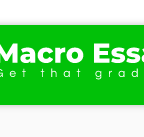How to Write an Abstract: Easy Steps and Structure Examples
If you need to succeed in your studies, you have to master various writing skills, including writing an abstract.
Even if it seems minor to an essay, research paper, or case study, an abstract is a vital part of academic writing.
What is an Abstract?
An abstract is a short summary of your completed research. It is intended to describe your work without going into great detail. Abstracts should be self-contained and concise, explaining your work as briefly and clearly as possible.
An abstract comes at the beginning of your work and serves as a sort of introduction to your paper.
In this article, we will guide you on how to write an abstract. Also including its types, components, and structure. We will then lead you step-by-step through the writing process itself.
So, if you are ready, let dive in and learn how to write an abstract.
🏁1.How to Write an Abstract: Getting started
Here are some of the things to consider before writing an abstract.
a) Make sure you understand all your abstract requirements: writing style, length, and the objectives of the abstract. All these factors will determine how your abstract will look like.
b) Consider your target audience. Make sure your Abstract is clear and precise for your target audience to get a better understanding of your work.
c) Decide on the type of Abstract. Deciding on the kind of Abstract is one of the most vital aspects. Keep on reading and learn more about types of abstracts.
2.Types of Abstract
There are two main types of abstracts: informative abstracts and descriptive abstracts.
a) Informative abstracts. This type of abstract summarizes a paper, describing its objective, methodology, background, results, and conclusion. Informative abstracts also include information about the paper structure, its main ideas, and the key topics discussed.
What is the length of this abstract?
An informative abstract normally ranges to about 250+ words. This kind of Abstract can be an independent document due to the completeness of the information provided in it.
b) Descriptive Abstract. Also known as a limited abstract. Descriptive abstracts talk about a general description of what the paper is about, without going into in-depth details and information.
Unlike the informative abstract, this kind of abstract only provides a general idea of your work without all the important aspects of the content. It is more like a table of contents but written in paragraph form.
Its length usually ranges between 100–200 words.
🌥3.Abstract Contents and Structure
The following are components of an effective abstract.
a) Motivation. This part explains why the topic you choose is interesting to the reader and why you choose it. You don’t have to talk about motivation at the beginning of your essay.
Here is the thing:
If your writing itself contains some unique findings and features, state the problem first. You won’t have to try to find ways to attract target readers even more because your findings will speak for themselves. However, if you feel your work is pretty ordinary, then it is necessary to start your Abstract with a “hook.”
b) Statement of the problem. Here, show what exactly your work was and what problem you were trying to solve.
Keep this part informative and try not to use too many specialized terminologies and jargons.
c) Approach. In this section, describe your actions to solve the problem or make progress in it.
Talk about the methodology you used, the strategies you followed, and the type of data you used.
d) Result. State the results as clearly as possible. Your readers want to know what you came up with. Otherwise, they will question the relevance of your work.
e) Conclusion. Here, explain the importance of your findings. Your readers should know whether your work has practical use or it just provides some crucial information.
You can also mention the possibilities for further research in your field.
🚶4.Writing an Abstract: Step-by-Step
a) Identify the purpose. Inform your target readers about the importance of your work. To identify the intention of your work, answer the following questions.
Why did I decide to study this specific topic?
How did I conduct my research?
What were my results and findings?
What is the importance of my findings and research?
Why would anyone read my entire paper?
b) Describe the core problem. Explain the problem clearly and precisely so that your reader will not have further questions. Here are some of the questions to answer.
What problem are you trying to solve in your research?
Is this a specific or general issue?
What are the main arguments in your work?
c) State the methods. Describe your research process. Talk about the approach you used and the data you decided to go with.
Remember to mention the evidence that supports your claims so that the readers can validate your work.
d) Share the results. If you decide to go with the descriptive Abstract, you may skip this step. On the contrary, if it’s an informative abstract, describe your general findings as well as the goal you reached through your research. Support your work with arguments and hypotheses.
e) Write a conclusion. This part will make a smooth transition to your abstract closure. Your abstracts conclusion must be convincing and inform your readers why your work is valuable deserves to be developed further.
We hope the mentioned tips and steps will help you in writing an abstract. However, you may ask for help here at Macro Essays if you find it difficult and challenging to compose a perfect abstract. We will make sure to deliver top-notch work that abides by your requirements and instructions. Just make your order now and get the best writing services.
